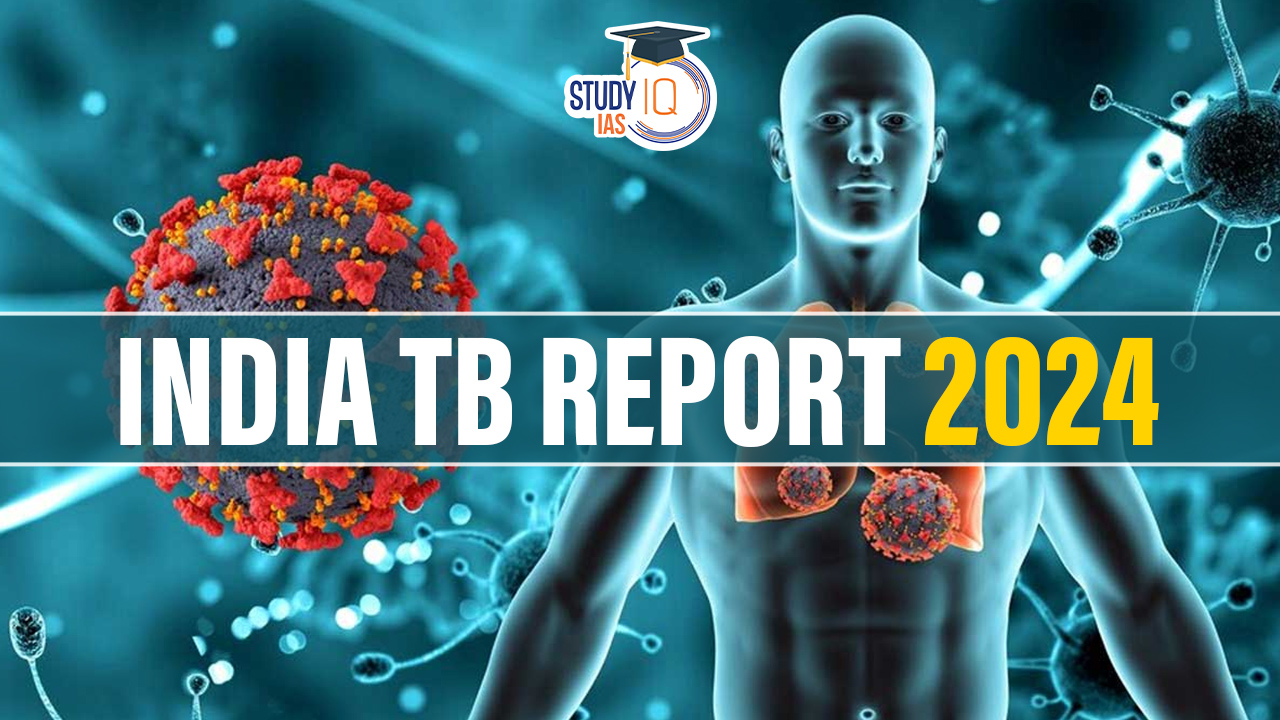Table of Contents
Context: According to the India TB Report 2024 released by the Union Health Ministry, India has seen a 16% decline in new tuberculosis (TB) cases and an 18% reduction in mortality since 2015.
India TB Report 2024 Important Highlights
- The country’s TB incidence rate dropped from 237 to 199 per 100,000 people between 2015 and 2022.
- TB mortality rates also fell from 28 to 23 per 100,000 people in the same period.
- In 2023, 32% of TB case notifications came from private healthcare, a 17% increase from the previous year.
- Overall TB case notifications have risen by over 50% in the last nine years.
- Uttar Pradesh recorded a 21% increase in TB notifications, the highest in the country compared to the previous year.
- Post-COVID-19 pandemic, the National Tuberculosis Elimination Programme (NTEP) aims to accelerate TB eradication.
- NTEP follows the National Strategic Plan for TB Elimination, which runs from 2017 to 2025.
- Continued efforts under NTEP have provided extensive diagnostic services, reaching approximately 1.89 crore people.
What is Tuberculosis (TB)?
- Tuberculosis (TB) is an infectious disease usually caused by Mycobacterium tuberculosis (MTB) bacteria.
- TB primarily affects the lungs (pulmonary TB) but can also affect other parts of the body (extrapulmonary TB).
- It’s one of the top 10 causes of death worldwide and a leading killer of people with HIV.
Also Read: India’s TB Burden
Key Aspects of Tuberculosis
Transmission
TB spreads through the air when a person with active pulmonary TB coughs, sneezes, speaks, or sings, releasing tiny droplets containing the bacteria. However, it generally requires prolonged exposure to someone with active TB to become infected.
Types of TB
- Latent TB: The bacteria remain in the body in an inactive state and cause no symptoms. It’s not contagious but can become active.
- Active TB: The bacteria are active and cause symptoms, such as coughing, fever, night sweats, and weight loss. Active TB is contagious.
Risk Factors
Including HIV/AIDS, diabetes, malnutrition, smoking, and living in or coming from a country with a high prevalence of TB.
Diagnosis
- Skin Test: A small amount of a substance called PPD tuberculin is injected just below the skin of the inside of the forearm. The injection site is then checked after 48-72 hours.
- Blood Tests: Measure the immune system’s reaction to TB bacteria.
- Chest X-Ray: Checks for changes in the lungs consistent with TB.
- Sputum Tests: Examines sputum (mucus coughed up from the lungs) for the presence of TB bacteria.
Treatment
- Standard Treatment for Active TB: Involves a combination of antibiotics over at least 6 months.
- Multidrug-Resistant Tuberculosis (MDR-TB): This form of TB is resistant to the most effective drugs and requires longer treatment with second-line drugs.
Prevention
- Vaccination: The BCG vaccine offers protection against TB.
- Public Health Measures: Include screening programs and ensuring those with active TB follow their treatment regimen to reduce transmission.
Global Efforts
- The WHO and other international bodies are involved in the fight against TB, focusing on the prevention, diagnosis, treatment, and tracking of TB cases worldwide.
- The WHO’s End TB Strategy aims to reduce TB deaths by 95% and cut new cases by 90% between 2015 and 2035.
We’re now on WhatsApp. Click to Join


 India’s Deep Sea Technology, Need and ...
India’s Deep Sea Technology, Need and ...
 Nag Anti-Tank Missile System (NAMIS)
Nag Anti-Tank Missile System (NAMIS)
 ESA’s Gaia Mission, Scientific Instrum...
ESA’s Gaia Mission, Scientific Instrum...





















